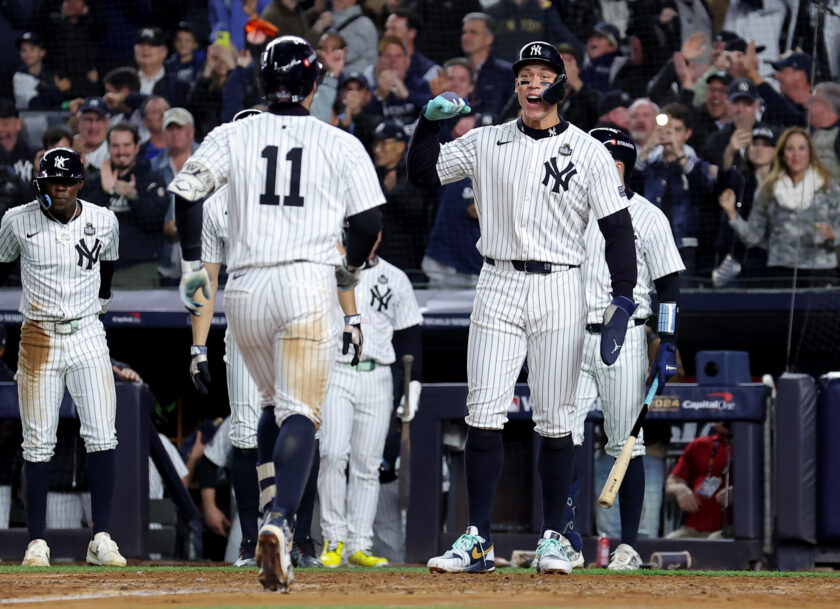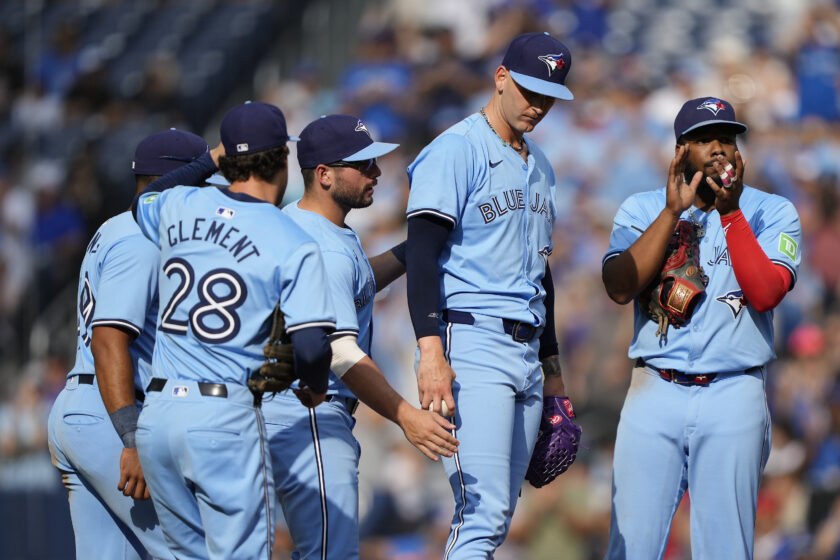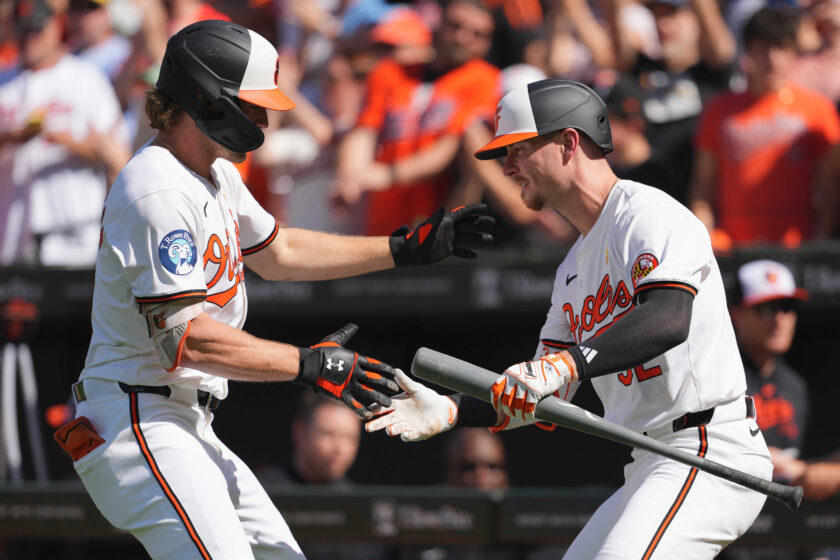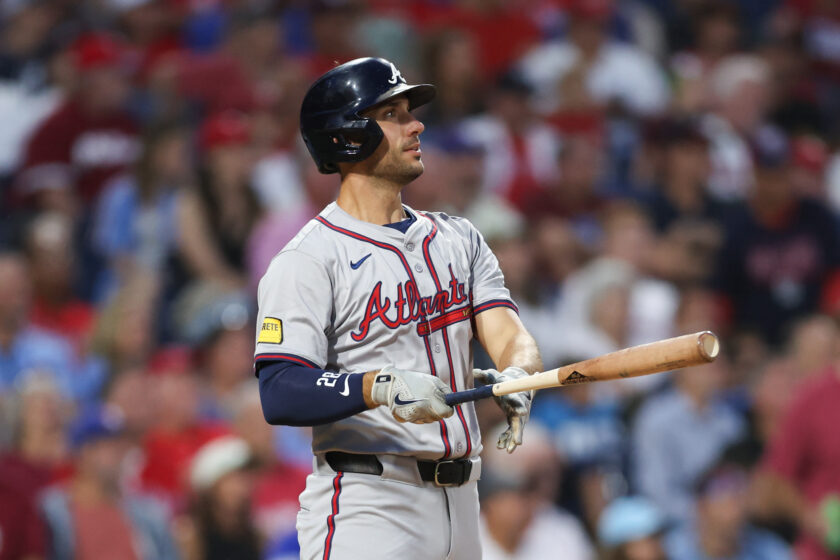What’s Up Doc? Roy Halladay should be part of 2018 Hall of Fame class
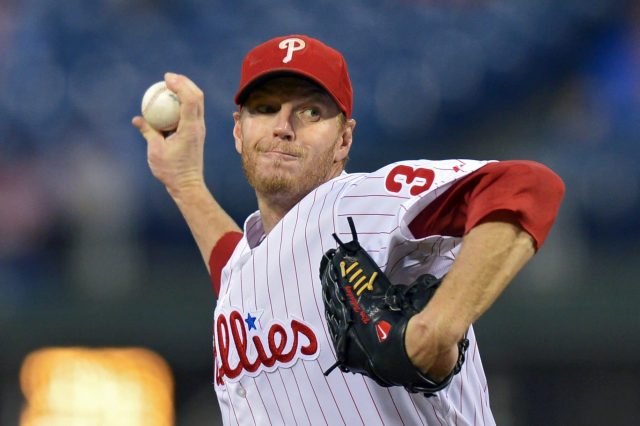
Nobody would dispute that Roy Halladay is a Hall of Fame pitcher. Why then are we forced to wait until 2019 to make it official?
On Sunday, the Modern Era committee elected two former teammates to the National Baseball Hall of Fame—shortstop Alan Trammell and World Series dynamo pitcher Jack Morris, formerly of the Detroit Tigers.
Subsequently, the Baseball Writers’ Association of America (BBWAA) will announce their selections on Jan. 29, choosing from a ballot that will now include first-time candidates in Chipper Jones, Jim Thome, and Omar Vizquel, along with retained players from past ballots, like Trevor Hoffman, Vladimir Guerrero, Edgar Martinez, Roger Clemens, and Barry Bonds, all of whom are worthy on pure numbers and performance alone, regardless if PEDs were used to alter such performance for some.
One of the names not included on January’s ballot is the recently departed Roy Halladay, the victim of a fatal plane crash in the Gulf of Mexico on November 7, a player who is not eligible until 2019, according to the BBWAA.
[sc name=”MLB Center”]Unfortunately, according to the Association’s regulations and by-laws, Rule 3(D) proclaims:
“In case of the death of an active player or a player who has been retired for less than five (5) full years, a candidate who is otherwise eligible shall be eligible in the next regular election held at least six (6) months after the date of death or after the end of the five (5) year period, whichever occurs first.”
Quite frankly, much about the BBWAA’s process is antiquated and in severe need of retooling. Roy Halladay’s death and first-ballot resume serve as a timely opportunity to revamp what has long been muddled, especially when voters must decide on naming a small sample (10 players) when so many more could be Hall-worthy, worse yet when the Association is split on how to manage PED users like Clemens and Bonds.
Without question, Roy Halladay requires little in the way of campaigning to earn his plaque in Cooperstown.
In the first summer after my wife and I were married, my two uncles, father, cousin, and brother partook in a three-city series that spanned RFK Stadium, Citizen’s Bank Park, and Camden Yards to watch the Nationals and Braves, Phillies and Mets, and Blue Jays and Orioles square off, one against the other. To celebrate the occasion, I ordered shirts from Majestic Athletic’s warehouse in nearby Easton, PA of players representing the teams that garnered my rooting interest over those three memorable days: John Smoltz, Chase Utley, and Roy Halladay.
As luck would have it, each team for which I rooted lost.
Although each shirt was long ago relinquished to Salvation Army, I distinctly remember favoring one shirt over the other two: Doc Halladay’s, a black tee with a silver-chrome 32 wrapped in blue trim on the back.

As a Yankee fan, I saw plenty of Halladay, whose dominance against New York was unparalleled. As a Blue Jay, Doc managed a 2.84 career ERA against the Yankees, the best of any starter facing the Bombers in the Wild Card era with a minimum of 100 innings pitched. In 36 career starts against New York, Halladay more or less compiled a Cy Young worthy campaign, amassing an 18-7 record with a 2.98 ERA, 1.12 WHIP, seven complete games, and three shutouts. We were glad to see him leave the AL East for good at the end of the 2009 season, when the Philadelphia Phillies traded for him after falling two wins short of a second consecutive World Series title, bowing out to the Yankees in six games. On the bright side, seeing Halladay perform in another league made it easier to root for Doc, the last of an extinct breed of workhorse ace.

While he never did win a championship, Halladay went on to hurl a perfect game in only his eleventh start with the Phillies, posting a no-hitter in his first career postseason start later that year, the first no-no in October play since Don Larsen managed the feat in 1956. In light of such accolades, Doc went on to win his second Cy Young Award in 2010.

To that end, there is very little on Halladay’s resume that does not scream Hall of Fame talent.
An eight-time All-Star, he led his league in wins twice, complete games an astonishing seven times, shutouts four times, innings pitched four times, K/BB ratio five times, lowest walks per nine innings thrice, WAR for pitchers four times, and WHIP and ERA+ once each. Remarkably, in addition to his two Cy Young Awards, one in each league, Halladay rebounded twice from certain disaster, once from nearly not making the Blue Jays roster after an abysmal 2000 campaign (the experience inspired his well-touted stair-climbing routine) and another time after severely breaking his leg in 2004. In short, Roy Halladay was the stuff of legend, a pitcher whose home starts manifested themselves into must-see events, a la Pedro Martínez’s turns on the mound at Fenway Park. As a Phillie, he was a force in headlining the organization’s Red October campaign as Mr. Doctober, a player who was 3-2 with a 2.37 ERA and 0.74 WHIP in five postseason starts with the club.

When Halladay retired at age 36, the casualty of arm fatigue that plagued his final two seasons, he was the active leader in complete games (67), totaling 20 shutouts in a dazzling 16-year career. During his penultimate season in the majors, Halladay became the 67th hurler to notch 2,000 career strikeouts, ending his career as only the sixth pitcher in the history of the game to earn a Cy Young in both the American and National Leagues.
Like very few players before him, Doc Halladay was a performer who transcended his status as a major league pitcher: fans of the teams he faced thoroughly enjoyed seeing him pitch, the collective major league fanbase mourning his loss as though he were a part of their organization. In light of this status, the BBWAA needs to honor him a year earlier than is regulated, regardless of what they stubbornly decided in November. Doing so would recognize Halladay as the last of his kind: a dominant workhorse such as will never likely be fathomed again in the sport.
[sc name=”Generic Link Next” link=”https://elitesportsny.com/2017/12/12/new-york-yankees-trade-chase-headley-san-diego/” text=”Yankees Trade Headley, Mitchell to San Diego” ] [sc name=”MLB Section”]I am an English teacher, music and film aficionado, husband, father of two delightful boys, writer, sports fanatic, former Long Islander, and follower of Christ.
Based on my Long Island upbringing, I was groomed as a Yankees, Giants, Rangers, and Knicks fan, and picked up Duke basketball, Notre Dame football, and Tottenham Hotspur football fandom along the way.

